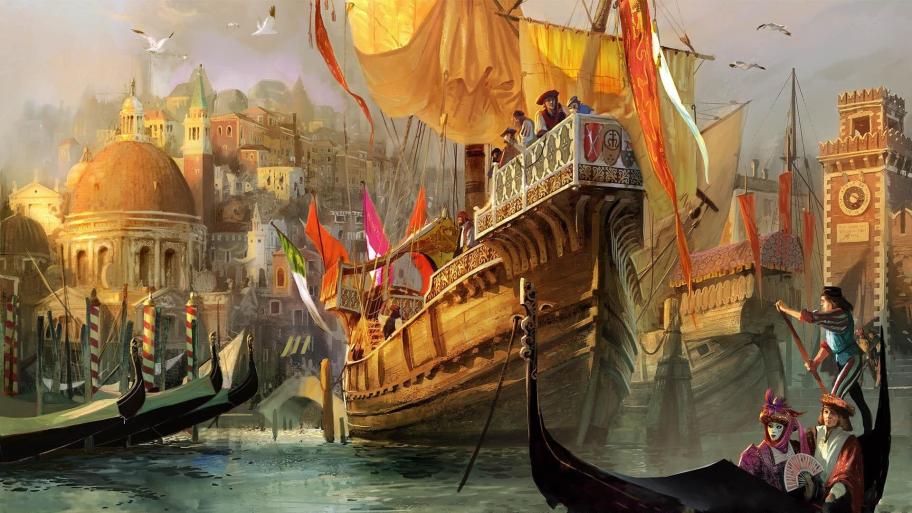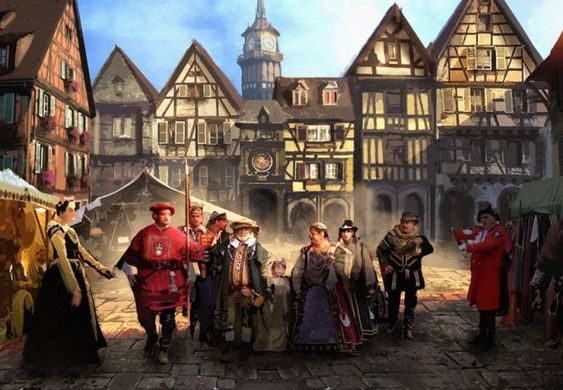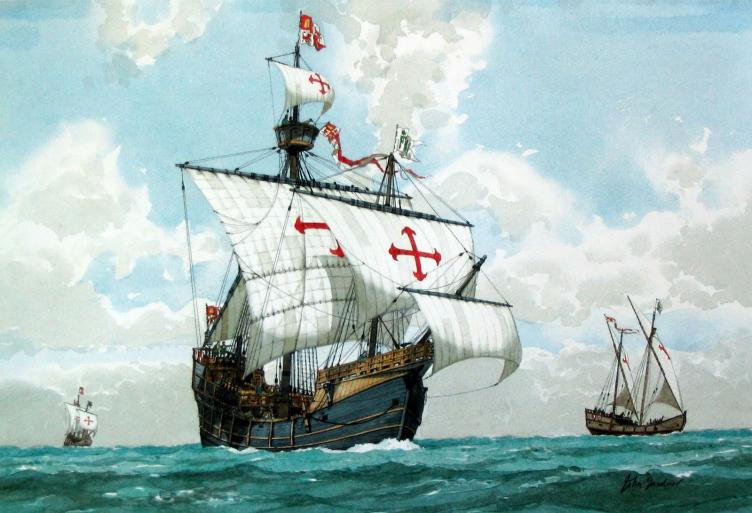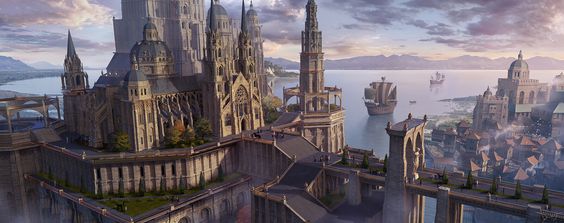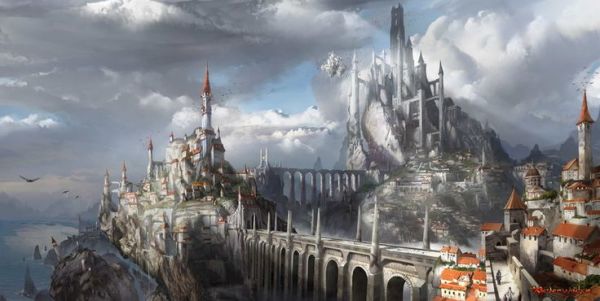The Bestia Horde (The High Chiefdom of Bestia)
NPC
Territory:
Species: Beastmen (Beastmen sub-species/mixbreeds), Humans, Elven Minority.
History: The High Chiefdom of Bestia (Known to many as The Bestia Horde) was once the foremost frontier region of the empire, despite its lush greenery it proved hazards from odd weather, hostile human tribes, elven extremist seeking to imitate the Pale, and of course countless beastmen remnants who were not chased all the way northward.
The Orduin Empire flip-flopped between controlling the land and loosing it over the years. They were making significant strides before the bug invasion, with no major conflicts, the Imperial Legions became more and more obsessed with controlling the region and had begun using it as a staging ground for northern expeditions.
However, when the empire fell so too did all authority it had in the region. The Imperial garrisons either returned south or defected entirely, joining with local tribes.
During the days of chaos many would be unifiers rose up in the wild region, only to be scattered by outside forces, or at the hands of a rival warlord or chieftain.
In the year 2610 a Beastman by the name of Auguba, born with far greater intellect than was common for one of his kind; managed to subdue the other tribes and clans, uniting beastmen, human, and even the Elven Blood Clans into a power known as the High Chiefdom of Bestia, or to those outside of the land, the Bestia Horde.

For years the horde only partook in small-scale raids, however in the year 2617 IC the Bestia Horde took advantage of a war between the Valanor Accord and the Free Emirates of the Northern Wastes; to invade the Free Emirates while they were weakened, taking most of the now defunct nation's land for themselves, killing and enslaving all who didn't flee.
The Bestia Horde as continued to terrorize the region, an ever constant source of harassment for the Valanor Accord, along with Thakis, The Yuukoman Empire, the Duchy of East Orduin (now belonging to the Roaming-Hills), and even the Kycer of Caslan. However, the High King of the horde has begun to acquire more exotic tastes, and now looks to the south for a new source of entertainment.
Government: The “unity” presented by Auguba is a hoax, and in reality the tribes and clans of the region simply pay a monthly tribute to Auguba, and join him in raids. Besides that they are free to act as they desire, when they desire, including wars with each other.
Culture: The High Chiefdom is made up of various tribes, clans, and warbands from the races of human, elf, and most of all beastmen. The human tribes in the region are many, and fierce warriors in their own right, yet compared to larger barbarian hordes such as the Roaming-Hills they are little more than glorified bandits; however when pared with the other species in the Horde of Bestia, they prove to be an often decisive force in battle. Even so, despite being one of the region's initial inhabitants they are at the bottom of what passes for a social caste within the horde; which while not really enforced or written down, is felt by how the other creatures look down upon and mock the humans. They are still however, treated much better than any outsider would be, doubly so for slaves taken from raids in the lands beyond.

Before the fall of the Empire, elven extremist groups attempted to reawaken the Pale, or otherwise find the secrets to their power; crafting communes where they thought the Pale stadged their invasion. However, they all failed and those that didn’t mysteriously disappear turned to the savage ways of the local inhabitants, becoming what is known as the Elven Blood Clans. These Blood Clans carry on many of the ways of their predecessors, preparing particularly agonizing deaths and torture for half-elves and elves who take on human lovers/spouses. They kidnap any elves they find to try and “undo the brainwashing” through physical and psychological breaking. All of this despite the fact that they seem perfectly willing to go on raids with human tribes.


Beastmen make up a large portion of the local inhabitants, with many having fled to the region after the beastmen wars, or returning in the years that followed. They are horrid amalgamations of man and beast, with most barring horns of bulls and goats, and hairy hooved legs, and the heads of animals. Some have tentacles serving as beards or protruding from their backsides, and arms. Others take on horse or bird like features that seem haphazardly grown, without any thought to functionality and purpose.




Others meanwhile have taken on forms that can not be described easily with words. Baring little resemblance to any true animal, instead displaying a visage that has yet to be fully understood.

The beastmen in the region have picked up some of the local ways, and while they are still savages, show some noticeable signs of civility in comparison to their far northern kin.
For example the idea of someone kneeling before you as something to be rewarded rather than mocked, as the beastmen in the region have come to appreciate the idea of someone choosing to follow out of emotions other than fear or dominance. Even so, fear and dominance is still a very rooted belief system in the beastmen halls; which compels them to raid southward by land into the Valanor Accord, the Yuukoman Empire and Thakis or across the sea to Caslan, The Lunar Tribes, and lands beyond.
While purebred Beastmen vary in size and shape, leaving little room to distinguish them, there are a select few sub-species with notable characteristics.
Gnolls: A type of hyena/dog/wolf beastman that spawned from the experiments of mages, attempting to create an artificial beastman to aid the Orduin Empire in the beastmen wars. The Gnolls did indeed fight the other true born beastmen but they also killed most of the mages who made them along with countless other Imperial citizens. In the end they were chased north with the rest of the beastmen at the end of the war. Most of them were killed but they began to procreate with human, elf, and beastman populations; the offspring of which were always indistinguishable from pure-breed gnolls. Some say the Gnolls are just mindless beast, little better than the Beastmen they were spawned to destroy; however do not be fooled, behind every seemingly senseless slaughter there is an overarching agenda at play. The intelligence of the Gnolls is not to be underestimated.

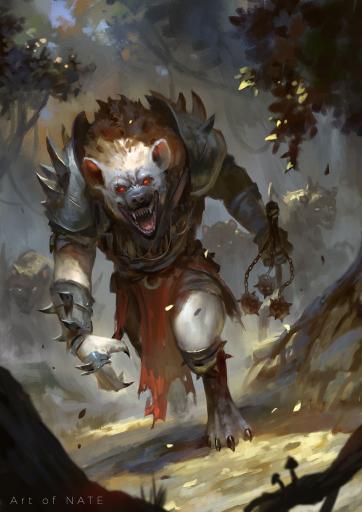
Malum-Satyri: When the Satyri were chased south by the beastmen hoards many were captured and enslaved. Others settled in the northern region, unaware that they were right in the middle of what would become a beastmen hot spot. Years of interbreeding between the Satyri with Beastmen (along with humans and elves on occasion) have created a wicked subspecies known as the Malum-Satyri, a group that maintains many of the cultural aspects of regular Satyri but are generally more mischievous, violent, greedy, and bloodthirsty. Physically they will look more human, elven, or animalistic(beastmen) depending on how much of each species their ancestors interbedded with. A Malum-Satyri with a beastmen father will have more obvious animal traits than one who has a history of humans in their lineage. Like their sister species, the Malum-Satyri are a matriarchal people, with a significantly higher rate of female birth compared to male births; which lead to what few purebred males they have to be house-keepers whom the village/clan of multiple wives and children are built around. Unlike regular Satyri, Malum-Satyri, especially younger ones, tend to leave the village in search of glory, fortune, a private mate of a foreign species, power, or otherwise make a name for themselves in some way while having some good old fashion fun. It is not until they reach their mid-life that they become more interested in joining or starting a village and the continuation of their species. This overall causes the population levels of Malum-Satyri to be much lower than their sisters in Thakis, doubly so for purebloods, but is by no means too small.



Malum-Satyri Male

Impius-Valaa: Descendants of a Valaa Streak that believed they had lost their ways, and only by reembracing their animalistic heritage could they regain the strength they once had. To achieve this they traveled to the mainland and traveled the world as mercenaries, eventually finding themselves in the far north, beyond the Ishtar map. When they returned years later they no longer held a resemblance to what they once were; fully embracing the ways of the beastmen, with many holding beastmen blood in their veins. These Valaa began interbreeding with the human and elven populations in order to fight against inbreeding. This too changed the Impius-Valaa, into a species that can only be described as uncanny to both human and Valaa alike; giving off a sense of unease that effects many whom they interact with. However despite the resemblance to humans/elves the Impius-Valaa are much more violent and animalistic then main-branch Valaa; while holding the capacity for malice, spite, and evil familiar to creatures of high intelligence; resulting in a species that is the worst of man and animal with few of the good qualities of either. The Impius-Valaa come in the form of bloodthirsty animals always on the hunt for weak and vulnerable prey, or mischievous, pranksters who’s ideas of humor could prove rather morbid or horrifying to those at the butt of the joke. They are a very temperamental species, who can be laughing one minute and then brutally slaughtering something mere seconds later.

Economy:The economy of these lands are in shambles, with raiding being the only real way the hordes gain anything of value. There are farms of barley, wheat, and potatoes, as well as pig, cattle, and chicken; however these farms serve mainly to produce food for the overlords of the land rather than trade with foreign powers. Some of the human tribes in the most southern region are more open to trade, however they are the minority.
Religion:Only the bravest of missionaries dare to venture into the lands of Bestia. And few have ever attempted to study the local customs of the inhabitants and lived to tell others what they found.
Military:The Bestia Hordes are very unorganized in terms of their military ability, however some claim the gnolls have recently taken up more traditional military styles. For the most part every tribe and clan has a warchief that leads it and a number of captains under them. These warchiefs in theory obey High-Chief Auguba, but this is rarely true in practice.
NPC
Territory:

Species: Beastmen (Beastmen sub-species/mixbreeds), Humans, Elven Minority.
History: The High Chiefdom of Bestia (Known to many as The Bestia Horde) was once the foremost frontier region of the empire, despite its lush greenery it proved hazards from odd weather, hostile human tribes, elven extremist seeking to imitate the Pale, and of course countless beastmen remnants who were not chased all the way northward.
The Orduin Empire flip-flopped between controlling the land and loosing it over the years. They were making significant strides before the bug invasion, with no major conflicts, the Imperial Legions became more and more obsessed with controlling the region and had begun using it as a staging ground for northern expeditions.
However, when the empire fell so too did all authority it had in the region. The Imperial garrisons either returned south or defected entirely, joining with local tribes.
During the days of chaos many would be unifiers rose up in the wild region, only to be scattered by outside forces, or at the hands of a rival warlord or chieftain.
In the year 2610 a Beastman by the name of Auguba, born with far greater intellect than was common for one of his kind; managed to subdue the other tribes and clans, uniting beastmen, human, and even the Elven Blood Clans into a power known as the High Chiefdom of Bestia, or to those outside of the land, the Bestia Horde.

For years the horde only partook in small-scale raids, however in the year 2617 IC the Bestia Horde took advantage of a war between the Valanor Accord and the Free Emirates of the Northern Wastes; to invade the Free Emirates while they were weakened, taking most of the now defunct nation's land for themselves, killing and enslaving all who didn't flee.
The Bestia Horde as continued to terrorize the region, an ever constant source of harassment for the Valanor Accord, along with Thakis, The Yuukoman Empire, the Duchy of East Orduin (now belonging to the Roaming-Hills), and even the Kycer of Caslan. However, the High King of the horde has begun to acquire more exotic tastes, and now looks to the south for a new source of entertainment.
Government: The “unity” presented by Auguba is a hoax, and in reality the tribes and clans of the region simply pay a monthly tribute to Auguba, and join him in raids. Besides that they are free to act as they desire, when they desire, including wars with each other.
Culture: The High Chiefdom is made up of various tribes, clans, and warbands from the races of human, elf, and most of all beastmen. The human tribes in the region are many, and fierce warriors in their own right, yet compared to larger barbarian hordes such as the Roaming-Hills they are little more than glorified bandits; however when pared with the other species in the Horde of Bestia, they prove to be an often decisive force in battle. Even so, despite being one of the region's initial inhabitants they are at the bottom of what passes for a social caste within the horde; which while not really enforced or written down, is felt by how the other creatures look down upon and mock the humans. They are still however, treated much better than any outsider would be, doubly so for slaves taken from raids in the lands beyond.

Before the fall of the Empire, elven extremist groups attempted to reawaken the Pale, or otherwise find the secrets to their power; crafting communes where they thought the Pale stadged their invasion. However, they all failed and those that didn’t mysteriously disappear turned to the savage ways of the local inhabitants, becoming what is known as the Elven Blood Clans. These Blood Clans carry on many of the ways of their predecessors, preparing particularly agonizing deaths and torture for half-elves and elves who take on human lovers/spouses. They kidnap any elves they find to try and “undo the brainwashing” through physical and psychological breaking. All of this despite the fact that they seem perfectly willing to go on raids with human tribes.


Beastmen make up a large portion of the local inhabitants, with many having fled to the region after the beastmen wars, or returning in the years that followed. They are horrid amalgamations of man and beast, with most barring horns of bulls and goats, and hairy hooved legs, and the heads of animals. Some have tentacles serving as beards or protruding from their backsides, and arms. Others take on horse or bird like features that seem haphazardly grown, without any thought to functionality and purpose.




Others meanwhile have taken on forms that can not be described easily with words. Baring little resemblance to any true animal, instead displaying a visage that has yet to be fully understood.

The beastmen in the region have picked up some of the local ways, and while they are still savages, show some noticeable signs of civility in comparison to their far northern kin.
For example the idea of someone kneeling before you as something to be rewarded rather than mocked, as the beastmen in the region have come to appreciate the idea of someone choosing to follow out of emotions other than fear or dominance. Even so, fear and dominance is still a very rooted belief system in the beastmen halls; which compels them to raid southward by land into the Valanor Accord, the Yuukoman Empire and Thakis or across the sea to Caslan, The Lunar Tribes, and lands beyond.
While purebred Beastmen vary in size and shape, leaving little room to distinguish them, there are a select few sub-species with notable characteristics.
Gnolls: A type of hyena/dog/wolf beastman that spawned from the experiments of mages, attempting to create an artificial beastman to aid the Orduin Empire in the beastmen wars. The Gnolls did indeed fight the other true born beastmen but they also killed most of the mages who made them along with countless other Imperial citizens. In the end they were chased north with the rest of the beastmen at the end of the war. Most of them were killed but they began to procreate with human, elf, and beastman populations; the offspring of which were always indistinguishable from pure-breed gnolls. Some say the Gnolls are just mindless beast, little better than the Beastmen they were spawned to destroy; however do not be fooled, behind every seemingly senseless slaughter there is an overarching agenda at play. The intelligence of the Gnolls is not to be underestimated.


Malum-Satyri: When the Satyri were chased south by the beastmen hoards many were captured and enslaved. Others settled in the northern region, unaware that they were right in the middle of what would become a beastmen hot spot. Years of interbreeding between the Satyri with Beastmen (along with humans and elves on occasion) have created a wicked subspecies known as the Malum-Satyri, a group that maintains many of the cultural aspects of regular Satyri but are generally more mischievous, violent, greedy, and bloodthirsty. Physically they will look more human, elven, or animalistic(beastmen) depending on how much of each species their ancestors interbedded with. A Malum-Satyri with a beastmen father will have more obvious animal traits than one who has a history of humans in their lineage. Like their sister species, the Malum-Satyri are a matriarchal people, with a significantly higher rate of female birth compared to male births; which lead to what few purebred males they have to be house-keepers whom the village/clan of multiple wives and children are built around. Unlike regular Satyri, Malum-Satyri, especially younger ones, tend to leave the village in search of glory, fortune, a private mate of a foreign species, power, or otherwise make a name for themselves in some way while having some good old fashion fun. It is not until they reach their mid-life that they become more interested in joining or starting a village and the continuation of their species. This overall causes the population levels of Malum-Satyri to be much lower than their sisters in Thakis, doubly so for purebloods, but is by no means too small.



Malum-Satyri Male

Impius-Valaa: Descendants of a Valaa Streak that believed they had lost their ways, and only by reembracing their animalistic heritage could they regain the strength they once had. To achieve this they traveled to the mainland and traveled the world as mercenaries, eventually finding themselves in the far north, beyond the Ishtar map. When they returned years later they no longer held a resemblance to what they once were; fully embracing the ways of the beastmen, with many holding beastmen blood in their veins. These Valaa began interbreeding with the human and elven populations in order to fight against inbreeding. This too changed the Impius-Valaa, into a species that can only be described as uncanny to both human and Valaa alike; giving off a sense of unease that effects many whom they interact with. However despite the resemblance to humans/elves the Impius-Valaa are much more violent and animalistic then main-branch Valaa; while holding the capacity for malice, spite, and evil familiar to creatures of high intelligence; resulting in a species that is the worst of man and animal with few of the good qualities of either. The Impius-Valaa come in the form of bloodthirsty animals always on the hunt for weak and vulnerable prey, or mischievous, pranksters who’s ideas of humor could prove rather morbid or horrifying to those at the butt of the joke. They are a very temperamental species, who can be laughing one minute and then brutally slaughtering something mere seconds later.

Economy:The economy of these lands are in shambles, with raiding being the only real way the hordes gain anything of value. There are farms of barley, wheat, and potatoes, as well as pig, cattle, and chicken; however these farms serve mainly to produce food for the overlords of the land rather than trade with foreign powers. Some of the human tribes in the most southern region are more open to trade, however they are the minority.
Religion:Only the bravest of missionaries dare to venture into the lands of Bestia. And few have ever attempted to study the local customs of the inhabitants and lived to tell others what they found.
Military:The Bestia Hordes are very unorganized in terms of their military ability, however some claim the gnolls have recently taken up more traditional military styles. For the most part every tribe and clan has a warchief that leads it and a number of captains under them. These warchiefs in theory obey High-Chief Auguba, but this is rarely true in practice.






